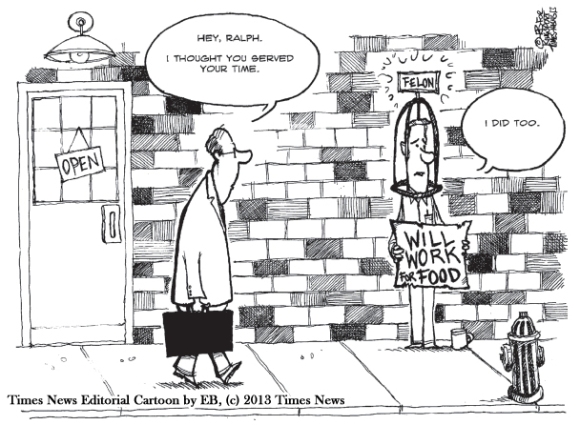Two more articles, as published in V.2.N.1., April 2016, Help YourSelf Community Resources Directory:
GOVERNOR PROCLAIMS REENTRY DAY

Pedestrian bridge spanning the Arkansas River between Little Rock and North Little Rock, Arkansas.
“Right now … if you leave prison, you get $100 and a bus ticket,” Gov. Asa Hutchinson laid out his plan for the state prison system Feb. 18, 2015.
“That is really not going to help reduce repeat offenders from going back in,” he said. “They need an opportunity. The reentry centers will help them find their way back into society.”
On Wednesday, April 13, several dozen civic and social advocacy groups and many members of the general public who are affected by these issues rallied on the front steps of the Capitol in a show of support for proposed reforms, such as the hiring of additional parole and probation officers, the creation of a transitional reentry center program and alternative (non-prison) sentences for nonviolent offenders.
Coordinated by the Central Arkansas ReEntry (CARE) Coalition, the rally featured several distinguished speakers representing various agencies and organizations which actively provide reentry support service.
“Because the impact of incarceration is so great on the individual, their families, and society as a whole, it takes an array of service providers, public policy experts, faith-based groups, community organizations and support services to assist with transition to return to society and avoid the situations that lead to recidivism,” Robert Kim Combs, Chair of CARE’s Policy & Law Committee, explained the complexity of the problem.
“No one entity can do it all and do it effectively,” he said. “This rally brought together a number of the people and organizations that are helping and to tell the story of the 56% of people who successfully return to free society without re-offending. And it is important to acknowledge that many of these groups are working without government support.”
In appreciation of these collaborative efforts, an official Proclamation of the Governor, declaring April 13, 2016, as ARKANSAS COMMUNITY REENTRY DAY, was read and, concluding the presentation, attendees toured the Capitol to meet legislators and learn about the General Assembly.
For more information, visit www.ArkansasReentry.com or call (501) 444-CARE.
So…THIS IS HEAVEN???

“Fiesta” — statue at The Rivermarket in Little Rock, Arkansas. Photo by Regina Strehl
A man was visited by the Archangel Gabriel and invited to tour both heaven and hell so he could report back to his brethren and give a firsthand account of what the afterlife was like.
In hell he found a beautiful earth-like land, replete with towering mountains, deep-green forests, babbling brooks and sunny blue skies.
Rows and rows of tables, stretching as far as the eye could see and piled high with the most delicious food imaginable, stretched across the gorgeous countryside, yet masses of emaciated people roamed among the tables, moaning and weeping.
Every person had a huge fork strapped to each arm, above and below the elbow, which made it impossible to bend their arms to get any of the food into their mouths.
Try as they might to feed themselves, everyone was starving.
“What a horrible fate to endure,” said the man.
“Yes,” said the Archangel Gabriel. “Perpetual starvation in the midst of abundance. That is why we call it hell.”
Then POOF!!! The man was whisked-away to heaven where the view was nearly identical: rows and rows of delicious food spread upon tables across the bucolic land.
There, too, huge forks were double-strapped to the people’s arms which stopped them from feeding themselves, yet all were healthy and happy. “Because in heaven,” said Gabriel, “we all feed each other.” ~author unknown


 THE GOOD GRID
THE GOOD GRID
 “There’s the CARE Coalition and Freedom for Life, all these different coalitions and service providers, government agencies. Everyone wants to help,” she said.
“There’s the CARE Coalition and Freedom for Life, all these different coalitions and service providers, government agencies. Everyone wants to help,” she said.